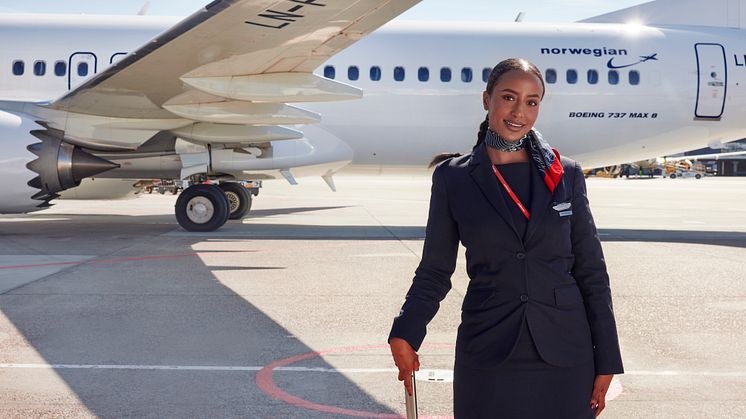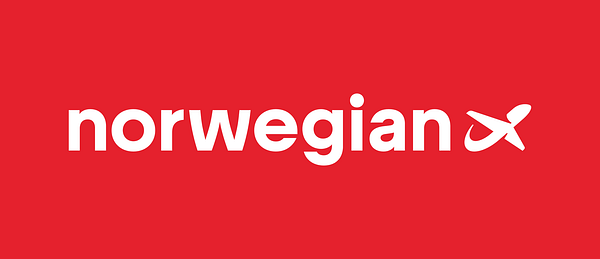
Press release -
The Norwegian Group with solid third quarter results
The Norwegian Group delivered an operating profit (EBIT) of NOK 2,128 million in the third quarter of 2024. The quarter was characterised by capacity growth for Norwegian and improving load factors for both airlines within the group. Widerøe contributed solidly and, for the first time ever in a quarter, carried over 1 million passengers.
For the third quarter of 2024, the Norwegian Group delivered an operating profit (EBIT) of NOK 2,128 million, corresponding to an operating margin of 18.4 percent. Profit before tax (EBT) amounted to NOK 2,004 million for the quarter. The liquidity position was NOK 11.5 billion, unchanged from the previous quarter and up 2.1 billion from last year. The Norwegian fleet comprised 86 aircraft at quarter-end, of which 22 were latest technology 737 MAX 8 aircraft. The Widerøe fleet comprised 49 aircraft.
“We are pleased with a solid quarter, showing increased load factors and unit revenues across both airlines, especially considering a 10 percent capacity increase for Norwegian. A record quarter for Widerøe demonstrates that the acquisition is bearing fruits, and we look forward to continuing to develop the significant synergies between the airlines. The booking momentum for the fourth quarter is encouraging across the group, both for leisure and business travel. Norwegian is operating a number of new leisure routes, including Dubai and Egypt, in addition to routes from European cities to the popular winter destinations of Tromsø and Evenes,” said Geir Karlsen, CEO of Norwegian.
The Norwegian Group had 8.2 million passengers in the quarter, of which 7.2 million were passengers of Norwegian and 1.0 million of Widerøe. Compared to the same period last year, the number of passengers increased by 690,000 for Norwegian and 99,000 for Widerøe. For Norwegian, production (ASK) increased by 10 percent to 11.5 billion seat kilometres, while for Widerøe the production decreased by 2 percent. The quarterly load factor for Norwegian was 88.0 percent, up 0.6 percentage points from the same period last year. For Widerøe, the quarterly load factor was 78.0 percent, an improvement of 4.6 percentage points from last year.
Norwegian’s punctuality, measured by the share of flights departing on schedule, was 74.2 percent in the quarter, down from 80.1 percent in the same period last year. While heavily congested European air space and air traffic control (ATC) restrictions negatively impacted punctuality this quarter, 95 percent of all flights arrived within 60 minutes of scheduled arrival time. Regularity, the share of scheduled flights taking place, was 99.5 percent for Norwegian. For Widerøe, punctuality in the quarter was 90.9 percent, while regularity was 96.4 percent.
Continued focus on cost effectiveness
Growth for 2025 is forecasted to slow down from the forecasted capacity growth of 13 percent for 2024. This is due to aircraft delivery delays from Boeing which are expected to worsen due to the Boeing strike. For the summer of 2025, the Norwegian fleet is currently forecasted to increase to around 90 aircraft.
“Going forward we will continue to work on streamlining the operation and identify additional synergies with Widerøe. We will expand our network with new and exciting destinations, while mitigating any challenges posed by the current fleet projections,” said Geir Karlsen.
With strong brand loyalty, highly skilled colleagues throughout the organisation and a solid financial platform, the group is well-positioned to tackle potential short-term fluctuations in demand and to solidify its position as a leading airline group in the Nordics. The addition of Widerøe to the group strengthens the company's customer proposition and outlook through enabling seamless travel across an improved route network offering.
Topics
Categories
About Norwegian
The Norwegian group is a leading Nordic aviation company, headquartered at Fornebu outside Oslo, Norway. The company has over 8,200 employees and owns two of the prominent airlines in the Nordics: Norwegian Air Shuttle and Widerøe’s Flyveselskap. Widerøe was acquired by Norwegian in 2024, aiming to facilitate seamless air travel across the two airline’s networks.
Widerøe’s Flyveselskap, Norway’s oldest airline, is Scandinavia’s largest regional carrier. The airline has more than 3,500 employees. Mainly operating the short-runway airports in rural Norway, Widerøe operates several state contract routes (PSO routes) in addition to its own commercial network. In 2023, the airline had 3.3 million passengers and a fleet of 48 aircraft, including 45 Bombardier Dash 8’s and three Embraer E190-E2's. Widerøe Ground Handling provides ground handling services at 41 Norwegian airports.
The Norwegian group has sustainability as a key priority and has committed to significantly reducing carbon emissions from its operations. Among numerous initiatives, the most noteworthy is the investment in production and use of fossil-free aviation fuel (SAF). Norwegian strives to become the sustainable choice for its passengers, actively contributing to the transformation of the aviation industry.


